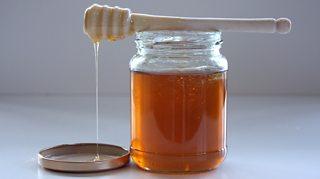The Manuka honey market has become a significant player in the global food industry, thanks to its unique properties and growing consumer interest in natural health products. Understanding the dynamics of this market is essential for stakeholders, including producers, retailers, and consumers. This article explores the key factors influencing the Manuka honey market, including demand drivers, supply challenges, competitive landscape, and consumer behavior.
Demand Drivers
One of the primary drivers of the Manuka honey market is the increasing awareness of health and wellness among consumers. Manuka honey is well-regarded for its antibacterial properties, primarily attributed to methylglyoxal (MGO), which offers numerous health benefits. As consumers become more health-conscious, they are seeking natural alternatives to traditional medicine, leading to a surge in demand for products like Manuka honey.
The COVID-19 pandemic has further accelerated this trend, as many individuals are looking for ways to boost their immunity and overall health. This heightened focus on wellness has prompted a rise in the consumption of functional foods and natural remedies, positioning Manuka honey as a favored option among health enthusiasts.
Supply Challenges
Despite the growing demand, the Manuka honey market faces several supply challenges. The production of Manuka honey is geographically limited to New Zealand and certain regions of Australia, where the Manuka tree (Leptospermum scoparium) thrives. This restricted growing area means that the supply of Manuka honey can be vulnerable to environmental factors, such as climate change, pests, and diseases that affect bee populations.
Furthermore, the high demand for authentic Manuka honey has led to concerns about adulteration and mislabeling. Many producers may blend Manuka honey with lower-quality varieties to meet market demand, undermining consumer trust. Regulatory bodies and industry standards, such as Unique Manuka Factor (UMF) ratings, are essential for maintaining product authenticity, but enforcement can be challenging.
Competitive Landscape
The competitive landscape of the Manuka honey market is another critical dynamic. With the increasing popularity of Manuka honey, a plethora of brands have entered the market, each vying for consumer attention. This influx of competition can lead to price wars and an emphasis on marketing strategies that highlight product quality and health benefits.
Established brands often leverage their reputation and quality certifications to maintain market share, while newer entrants focus on innovative products and niche markets. For example, some brands are diversifying their offerings by creating Manuka-infused skincare products, dietary supplements, and functional food items. This diversification not only caters to a broader audience but also enhances the overall market appeal.
Consumer Behavior
Consumer behavior is a pivotal factor influencing the dynamics of the Manuka honey market. Today's consumers are increasingly informed and discerning, often researching products before making purchases. They seek transparency regarding sourcing, quality, and health benefits. This trend underscores the importance of brands adopting clear labeling practices and engaging in educational marketing.
Moreover, the rise of e-commerce has transformed the way consumers access Manuka honey. Online platforms allow consumers to compare products, read reviews, and make informed choices. Brands that invest in digital marketing strategies can effectively reach their target audiences and enhance brand loyalty.
Conclusion
In conclusion, the dynamics of the Manuka honey market are shaped by various interrelated factors, including rising demand for health products, supply challenges, competitive pressures, and evolving consumer behavior. Stakeholders must navigate these dynamics carefully to thrive in this rapidly growing market. By focusing on quality, authenticity, and effective marketing strategies, producers and brands can position themselves for success in the ever-evolving landscape of Manuka honey.



